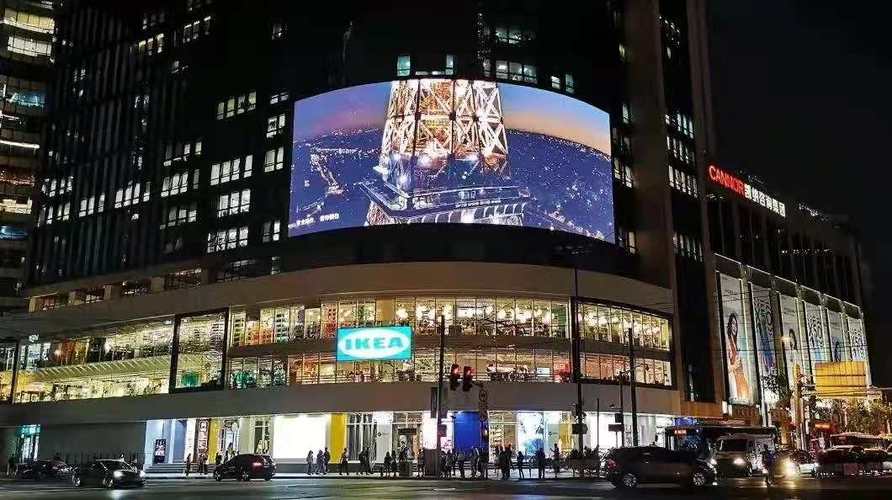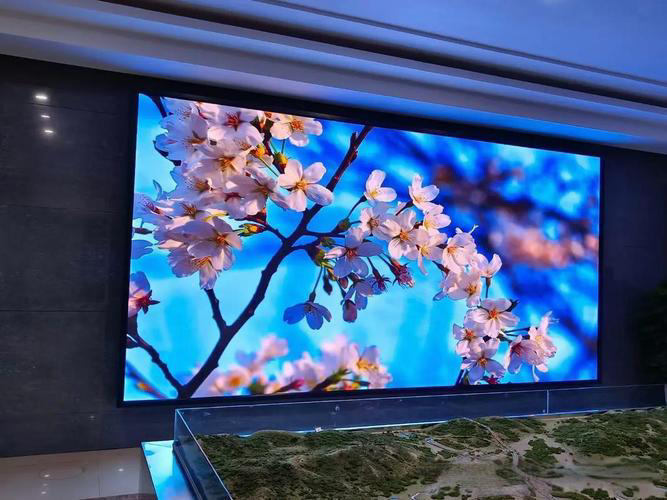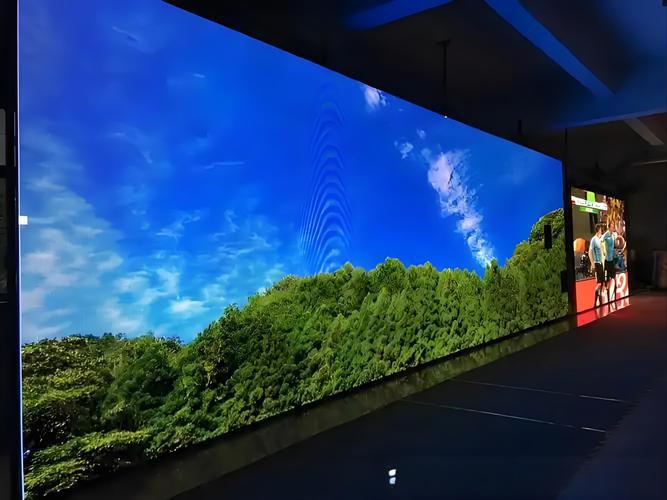Indoor LED refers to large and medium-sized LED display devices used indoors. For example, these devices can be seen in bank counters, supermarket promotional display boards, etc. The area of indoor LED display screens mostly ranges from one square meter to over ten square meters. The density of light-emitting points is relatively high, and the performance is slightly lower compared to outdoor LED displays.
Outdoor LED display refers to outdoor displays and products with high brightness, which is tens of times higher than indoor LED displays. Placing an indoor LED display screen outdoors is like placing a television outside, with insufficient brightness. Therefore, outdoor LED displays must use ultra-high brightness LEDs, and in order to further improve brightness and increase visible distance, multiple ultra-high brightness LEDs often need to be packaged within one pixel. At the same time, outdoor LED displays must be protected from water (rain), direct sunlight, dust, high temperature, wind, lightning strikes, etc., while indoor LED displays do not need to consider these issues.

01. Select according to the specifications and dimensions of the LED display screen
There are many specifications and sizes for LED display screens, such as P0.9, P1.2, P1.5, P1.8, P2.5, P3, P4 and other indoor models, as well as P5, P6, P8, P10 and other outdoor models. The spacing and display effect of different sizes are different, and the selection should be based on the situation.
02. Select according to the aspect ratio of the LED display screen
The aspect ratio of installing an LED display screen will directly affect the viewing effect, so the aspect ratio of the LED display screen is also an important factor to consider when selecting. Generally, there is no fixed ratio for graphic and text screens, and it is mainly determined based on the displayed content, while the common aspect ratios for video screens are 4:3, 16:9, etc.

03. Select by LED display color
LED display screens can be divided into monochrome screens, dual color screens, or full-color screens. Among them, LED monochrome display screens are luminous screens with only one color, and the display effect is not very good; LED dual color screens are generally composed of red and green LED diodes, which can display subtitles, images, etc; LED full-color display screen has rich colors and can present various pictures, videos, subtitles, etc. Currently, the most commonly used are LED dual color display screens and LED full-color display screens.
There are multiple models of LED display screens to choose from, and LED series products with different spacing from P0.9-P4 indoor and P5-P10 outdoor can be selected according to different usage scenarios such as customer display environment requirements.
At the same time, it has high-definition picture quality, uses high-quality small pitch LED beads to emit light, has high contrast, full and rich colors, delicate and realistic colors, and adopts highly integrated high grayscale and high refresh display technology. The 16 bit processing system reaches 65536 levels of grayscale, which can form 281 trillion colors; The high-speed refresh rate is high, reaching over 3840 Hz, which can fully meet the needs of high-speed cameras and high-definition TV broadcasting.
The LED display screen has high-quality modules and adopts a modular display unit module design, which can be seamlessly spliced in any direction, size, and shape; Simultaneously waterproof and dustproof, easy to disassemble and install, and convenient for maintenance. Adopting RGB three primary color imaging technology, the color gamut is wide, reaching broadcast level standards. After single point brightness and chromaticity correction, the color temperature of the screen can be adjusted within a range of 3000-12000K.

04. How to choose the model of LED display screen and which one has clear effect
Here, we would like to remind users who are preparing to purchase LED display screens that the denser the number of points, the better the cost-effectiveness and the most suitable for your use. You can consider the size of the area and the viewing distance requirements.
Here are some examples of indoor LED display screen models: P0.9, P1.25, P1.53, P1.667, P1.86, etc. belong to indoor small pitch LED display screen models, commonly used in government, government agencies, and public institutions indoors (such as video conferences, monitoring centers, command centers, exhibition halls, etc.), with clear requirements for close range (such as 1-3 meters) viewing. Small pitch models have high pixel count and relatively high cost.
P2, P2.5, P3 belong to indoor high-definition LED display models, commonly used in medium-sized conference rooms, lecture halls, corridors, etc. Suitable for a viewing distance of about 3 meters and an area of 4 square meters or more, the effect is better.
P3 and P4 are commonly used for mid-range viewing scenarios, such as hotel banquet halls and restaurant stage background LED screens located 3-10 meters away. They can be used as temporary stage constructions and LED stage screens for performances and events. For ease of carrying, transportation, and free disassembly, they are made into individual boxes that can be assembled in any size according to the venue environment. Generally, there are iron boxes, aluminum boxes, and also aviation boxes for packaging and transportation.
If it is for outdoor scenes, usually at a distance of more than 10 meters, such as square screens, outdoor billboards, etc., the main emphasis is on high brightness (≥ 5000nit) and waterproof and dustproof level (IP65 or above). The point spacing can be slightly larger to reduce costs, such as P4-P10, or even larger.
So, we should choose the LED display screen that suits us according to our own needs, and not blindly choose.
Post time: Oct-31-2025




